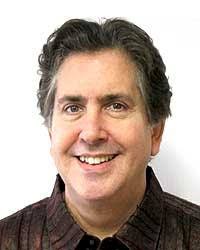1979 ⟶ EMYCIN Program Development
Bill VanMelle's PhD dissertation at Stanford demonstrated th...Year
1974
1976
1978
1979
🩺 Shortliffe's MYCIN Program Demonstrates Rule-Based Medical Diagnosis
Ted Shortliffe's PhD dissertation on the MYCIN program (Stanford) demonstrated a very practical rule-based approach to medical diagnoses, even in the presence of uncertainty. While it borrowed from DENDRAL, its own contributions strongly influenced the future of Expert system development, especially commercial systems.⟶

Expert SystemsMYCINMedical DiagnosisRule-Based SystemsTed ShortliffeStanfordAI in Healthcare
 USA
USA💡 Douglas Lenat's AM Program Demonstrates Discovery Model
Douglas Lenat's AM program (Stanford PhD dissertation) demonstrated the discovery model (loosely guided search for interesting conjectures).⟶

DiscoveryHeuristicsConcept FormationKnowledge RepresentationReasoningAM programDouglas LenatStanford University
 USA
USA🧠 Randall Davis Demonstrates Meta-Level Reasoning
Randall Davis demonstrated the power of meta-level reasoning in his PhD dissertation at Stanford.⟶
ReasoningMeta-reasoningKnowledge RepresentationArtificial IntelligencePhD DissertationRandall DavisStanford University
 USA
USA🧬 MOLGEN Program for Gene-Cloning Experiments
The MOLGEN program, written at Stanford by Mark Stefik and Peter Friedland, demonstrated that an Object-oriented programming representation of knowledge can be used to plan gene-Cloning experiments.⟶

Object-Oriented ProgrammingKnowledge RepresentationGene CloningMolecular BiologyMark StefikPeter FriedlandStanford University
 USA
USA🗣️ EMYCIN Program Development
Bill VanMelle's PhD dissertation at Stanford demonstrated the generality of MYCIN's representation of knowledge and style of reasoning in his EMYCIN program, the model for many commercial expert system "shells".⟶

Expert SystemsEMYCINKnowledge RepresentationReasoningMYCINBill VanMelleStanford University
 USA
USA